China remote handling crawler lawn mulcher for sale
Features of the China Remote Handling Crawler Lawn Mulcher
The China remote handling crawler lawn mulcher is equipped with a powerful V-type twin-cylinder gasoline engine. Our models utilize the Loncin brand, specifically the LC2V80FD model, which delivers an impressive rated power of 18 kW at 3600 rpm. This robust 764cc gasoline engine ensures strong performance, making it an ideal choice for various outdoor tasks.
One notable feature of this machine is its clutch system, which engages only when the engine reaches a predetermined rotation speed. This design enhances the operational efficiency and safety of the machine, allowing users to manage their tasks effectively without unnecessary wear on the engine.
The crawler design provides excellent stability and maneuverability across different terrains, ensuring that the mulcher can handle steep slopes and uneven ground with ease. The combination of the powerful engine and advanced engineering makes it a reliable tool for both professional landscapers and homeowners alike.
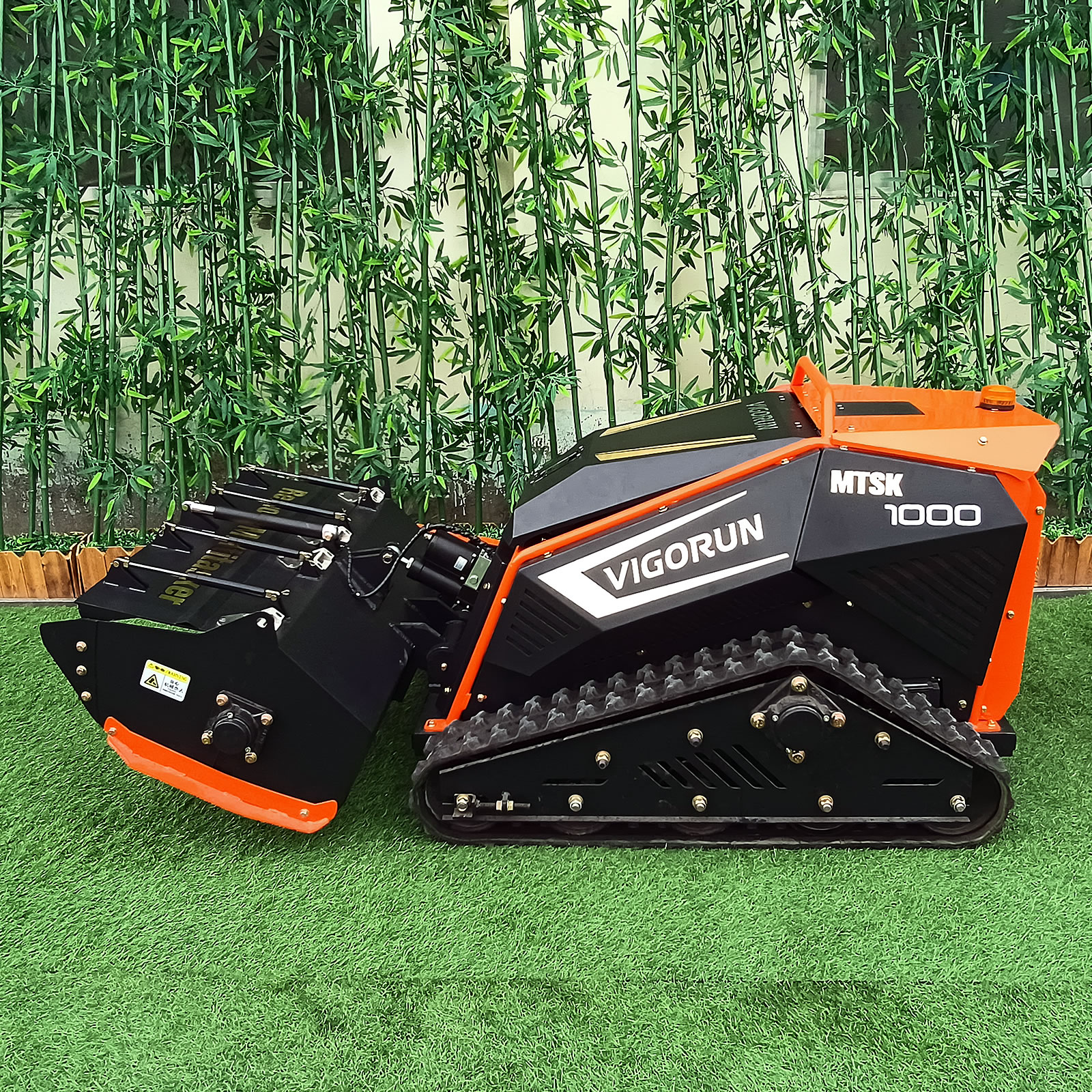
Versatility and Safety of the Mulcher
The China remote handling crawler lawn mulcher is built for versatility, featuring interchangeable front attachments that cater to a wide range of tasks. It can be equipped with a 1000mm-wide flail mower, hammer flail, forest mulcher, angle snow plow, or snow brush. This adaptability makes it suitable for heavy-duty grass cutting, shrub clearing, and even snow removal, ensuring outstanding performance in various conditions.
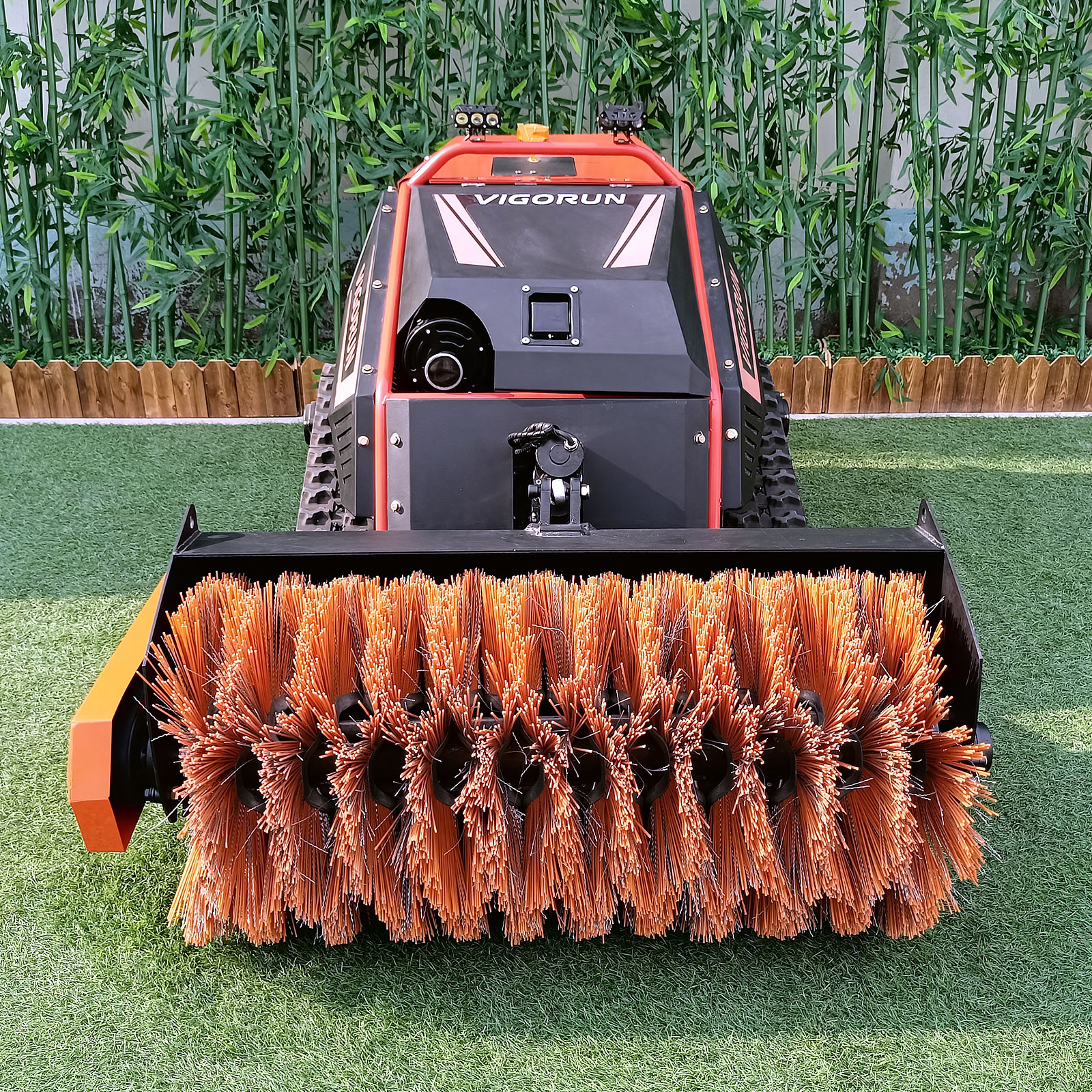
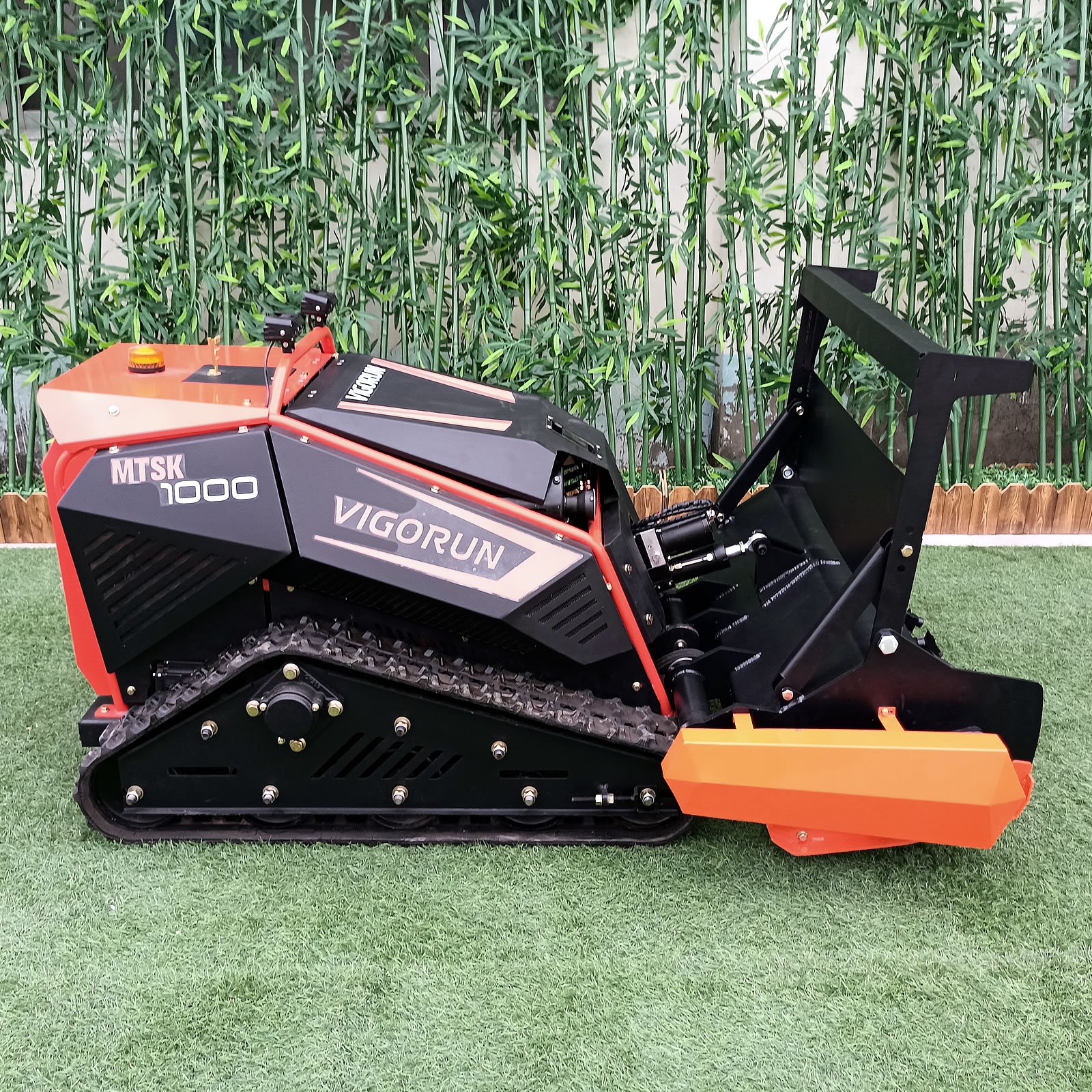
Safety is a top priority in the design of this machine. It includes a built-in self-locking function that ensures the mulcher only moves when both the power is on and the throttle is applied. This feature prevents unintended sliding, significantly enhancing operational safety during use.
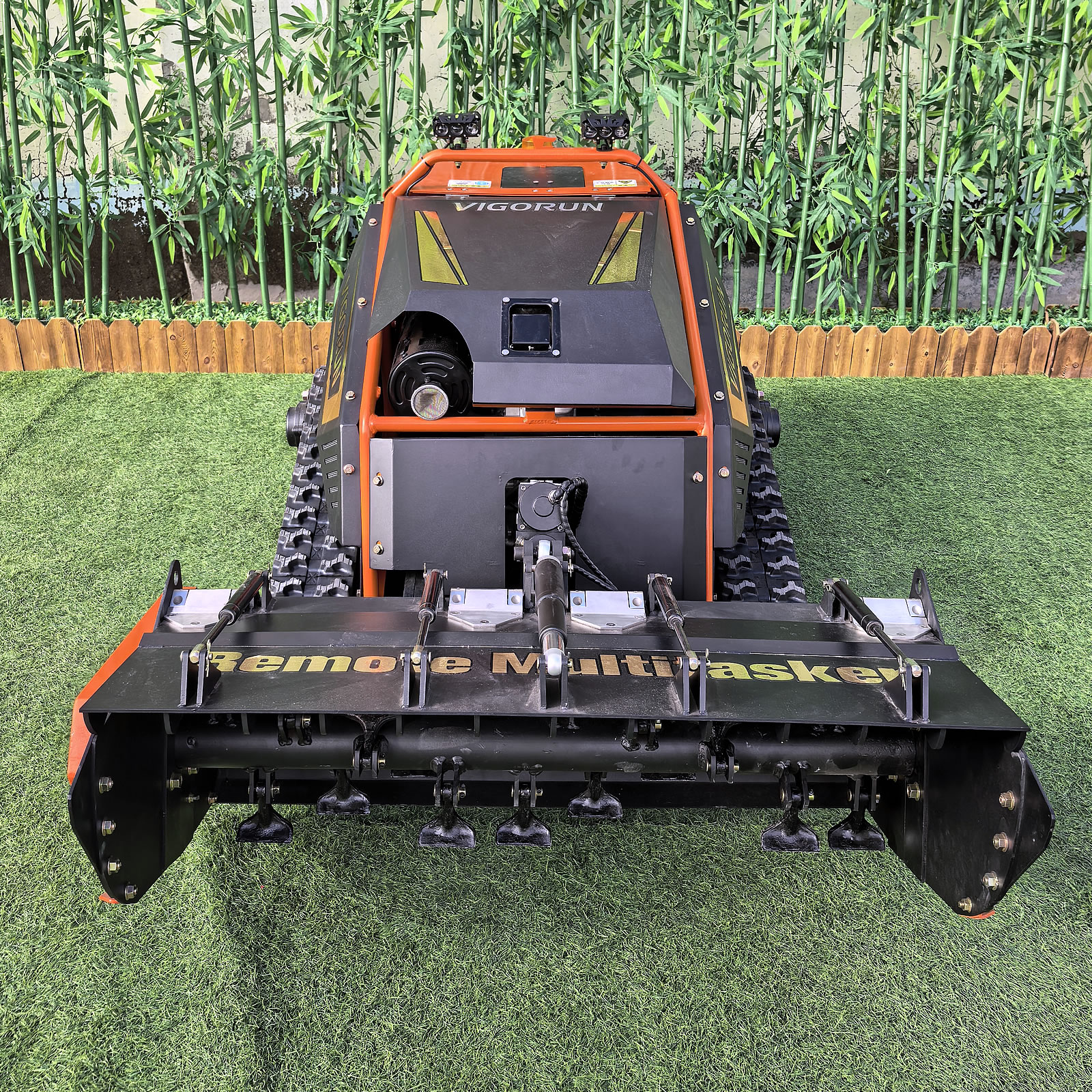
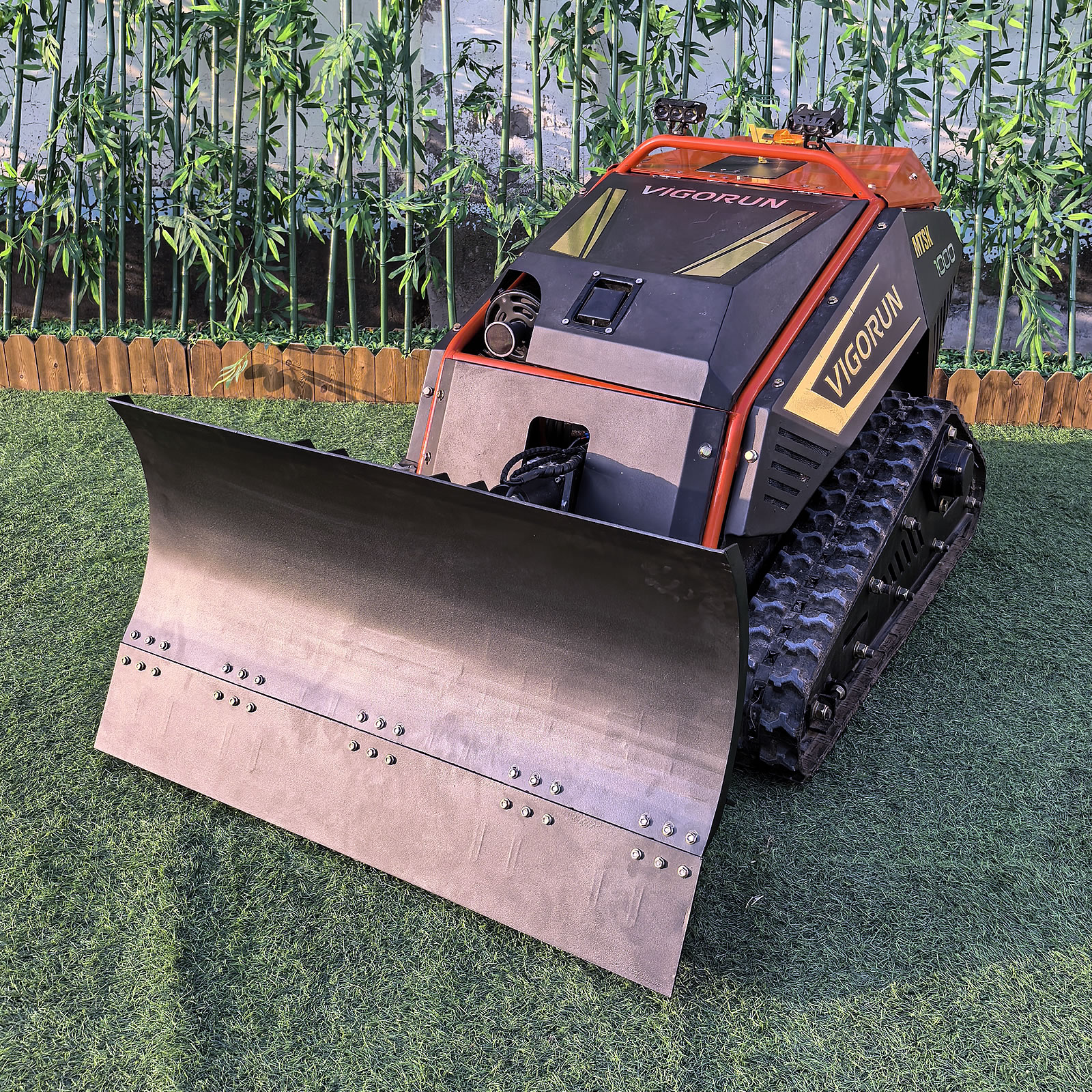
The intelligent servo controller precisely regulates motor speed and synchronizes the left and right tracks, allowing the mulcher to travel in a straight line without constant remote adjustments. This reduces the operator’s workload and minimizes the risks associated with over-correction, especially on steep slopes.
